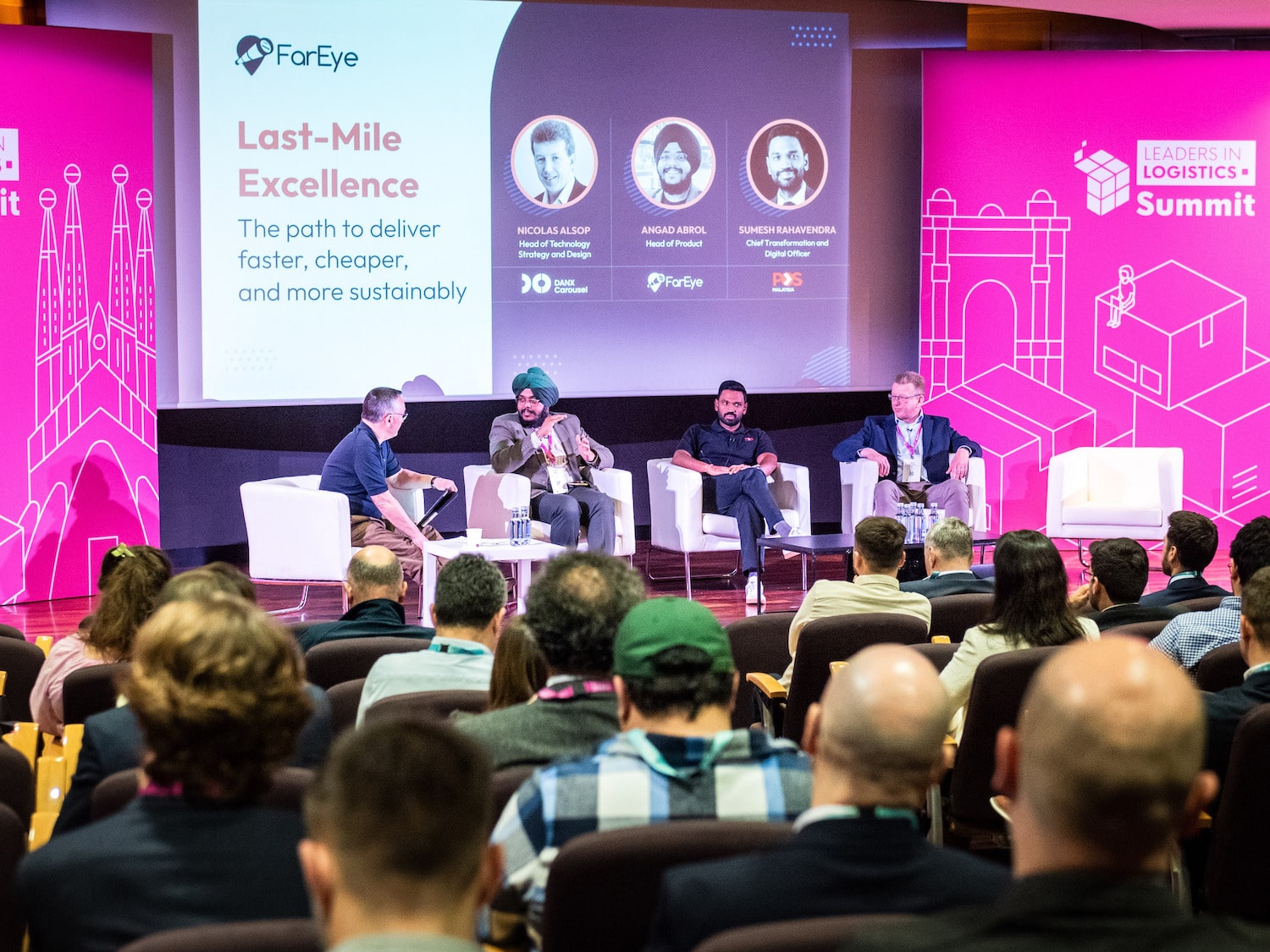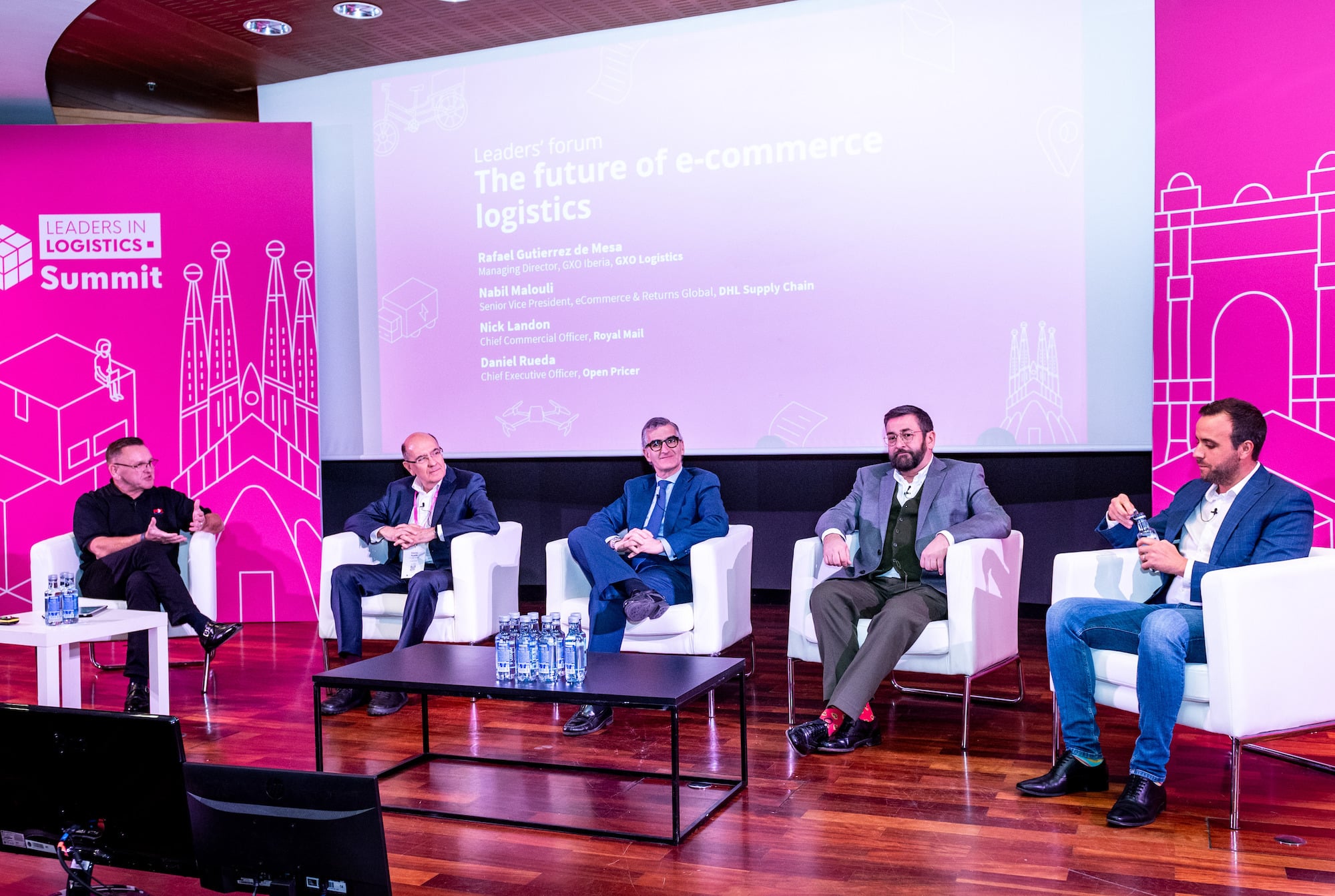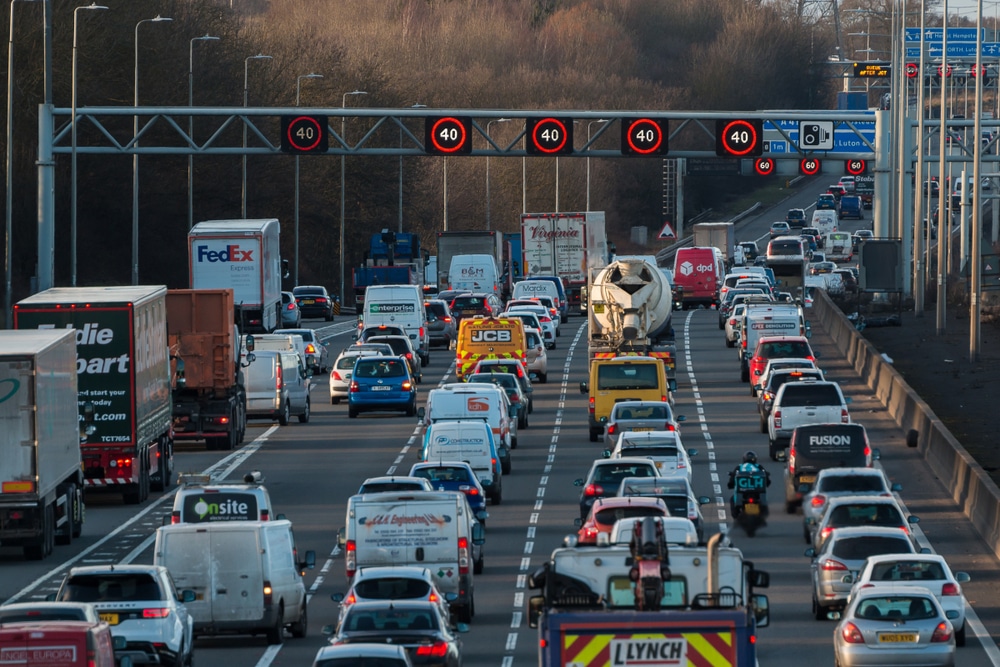Insight / Blog
Important lessons from Leaders in Logistics 2024

Summary: Leaders in Logistics 24 dived into AI & automation, sustainability, changing ecommerce behaviours, emerging consumer expectations & predicted what the next decade had in store.
The Leaders in Logistics Summit kicked off in Barcelona this year, welcoming more than 600 professionals from leading carriers, postal operators, 3PLs, retailers and technology providers. We were proud to sponsor the flagship event, meet so many of you at our stand and have our own Mike Richmond, VP of Sales, deliver one of the opening keynotes of the summit with his address ‘Lessons from a decade in the first and last mile’.
As we’ve done in previous years, we’ve compiled the best insights and key lessons provided by over 100 speakers in just two days.
AI and Automation took centre stage
It doesn’t come as a big surprise that AI and automation dominated many of the Leaders in Logistics presentations.
Rafael Gutierrez de Mesa, Managing Director at GXO Iberia, kicked the AI discussion off with his talk ‘Utilising cutting-edge technology to deliver a new generation of logistics’. Here, he revealed GXO’s strategy to utilise automation to improve employee satisfaction, productivity and safety. Over the past year, GXO has invested over €500 million in automation, resulting in at least 75% of all its activities having some degree of automation. 30% of GXO sites are now automated, compared to an industry average of 8%.
Rafael’s talk was a good insight into how logistics providers are already implementing automation. However, many discussions focused on how AI and automation can and should be used in the future. In ‘The AI awakening: transforming e-commerce logistics’ panel, industry leaders discussed the current transformation of ecommerce logistics by AI – and predicted what other changes we can expect. For example, panellist Marc Gittler, Vice President Data Analytics at Deutsche Post DHL Group, said that the biggest business case for AI lies in customer services.
He explained that CRM data provides a 360 overview of customers, and utilising AI in this area will be able to provide new opportunities for sales while improving interactions with clients and increasing retention. In turn, reducing the strain on customer services will also relieve labour shortage issues.
In ‘The future of ecommerce logistics panel’, Nabil Malouli, Senior Vice President, eCommerce & Returns Global at DHL Supply Chain, outlined how the biggest opportunity in next 5 years will be about moving from legacy systems to cloud-based solutions, and investing in robotics and machines to automate delivery.

There are many different opportunities to leverage AI and automation. But as we’ll touch on later, getting true efficiency and potential from AI will depend on making sure that all automated solutions and technology work with each other. Rather than deploying AI in specific departmental silos, retailers and logistics providers alike need to form single, connected systems to improve efficiency across the entire journey.
Sustaining the conversation on sustainability
Sustainability has been a hot topic over the past few years. Last year, talks on sustainability focused on why implementing sustainable strategies is the key to increased efficiency and improved business processes. There was also a strong call for more standardisation to help speed up sustainability processes, which was echoed this year by Holger Winklbauer, Chief Executive Officer at International Post Corporation, who called for an industry-level approach to sustainability.
This year, the discussion on sustainability focused on balancing sustainable practices and strategies with cost, customer convenience and expectation. In the panel discussion ‘Balancing customer convenience with cost and sustainability’, the panellists first explored who should take responsibility for sustainable delivery.
Thiemo van Spellen, Group Global Accounts Managing Director at Geopost, stated that “every part of the supply chain needs to take responsibility” for sustainability, and should not rely on consumers to pay for sustainable options. Elaborating further, Thiemo explained that the key to offering sustainable delivery is to build a hybrid network of both home and OOH delivery that offers different options and is adapted to local needs.
Tadej Visinski, Cofounder and Managing Director at Direct4.me, agreed with Thiemo, stressing the need for parcel consolidation to reduce emissions. He also explained that cities are taking the lead for this in the last mile through taxes and interventions, as shown in Spain, Norway, Croatia, and the Netherlands. More net zero initiatives will also drive and accelerate the momentum here. Still, it seems that it’s up to carriers to provide that sustainability element themselves and get ahead of legislative changes before they are in place.
Carriers don’t need to work alone for sustainable options either. Alexander van Schie, Group Director, Strategy, Mergers and Acquisitions at PostNL explained that the Dutch postal operator had opened up its out-of-home network to European parcel carrier GLS, meaning wider access to more sustainable delivery options without the barrier of initial investment in infrastructure.
Regulation is coming for European ecommerce logistics
There’s still a balance carriers must strike between customer convenience and sustainability. However, one way to strike this balance is to reframe consumer ideas around convenience, especially concerning home delivery. As Evri Chief Growth Officer David Saenz explained in his talk ‘The out-of-home opportunity: exploring the trends’, home delivery is convenient for customers, but only when it works well. Home delivery loses its convenience if consumers are stuck waiting for couriers or chasing missed parcels. Paired with the statistic that 25% of consumers don’t have a space place at home, OOH options become the more convenient option for many customers, at least some of the time.

Convenient and sustainable: developing an out-of-home delivery strategy
Sustainability has become a key decision factor for retailers – here’s how carriers can stay ahead with an out-of-home delivery strategy that’s both sustainable and convenient for consumers
Changing ecommerce behaviours and emerging expectations
Speaking of consumer behaviour, another big topic at Leaders In Logistics was customer behaviour, specifically how ecommerce habits are changing and their effect on emerging expectations.
Richard Lim, CEO of Retail Economics, took charge of this discussion with his talk ‘A customer diagnosis: insights into online retail consumer behaviour’. In it, Richard discussed how the customer journey has evolved over the past few years from a single-channel journey to a multi-channel and then an omnichannel journey. From a consumer perspective, this is going from shopping at a brick-and-mortar store alone, to using both in-store shopping as well as online catalogues, to multiple physical and online touchpoints. However, as Richard points out, we are now entering another stage in this journey – the unified commerce experience. This is where the different touchpoints of the customer journey are connected into a single journey across all platforms. For example, a consumer may watch relevant videos on TikTok, explore the store on a review site, and then order online.
As Richard shows, 62% consumers now start their browsing journey online. For ‘Digital native’ consumers (under 45s), this percentage increases to 71% and is more likely to bounce between physical and online touchpoints. Consumer behaviour varies by age, region and affluence – but by having a connected unified commerce experience, retailers can ensure that the journey appeals to all.
In addition, Richard also pointed to a growth in the C2C market, stating that more ASOS clothes were sent to the second-hand clothing website Depop than to ASOS. Carmen Cureu, Market Research Director, and Herve Crochet, Group Head of Sales at GeoPost, also commented on growing C2C usage in their talk ‘Delve into e-shoppers’ expectations to deliver change’. Running through some key results from the shopping trends in Europe report, Carmen and Herve revealed that of the 24 thousand consumers surveyed, 72% use C2C platforms.
We previously explored how C2C commerce is transforming the last mile, generating more demand for parcel sending, significantly increasing PUDO and locker usage, staying at the forefront of sustainability, and changing how shoppers deal with returns. C2C growth doesn’t look to be slowing down, so carriers need to consider adopting new technologies and think differently about their consumer journey to address this traffic and changes in consumer behaviour.
The future of last mile…
It wouldn’t be Leaders in Logistics without discussing the future of the last mile. In this area, the Barcelona summit touched on many of the themes we picked out above, including the need to embrace automation and AI, changing consumer behaviour and demands, all while balancing sustainability.
Rafael Gutiérrez De Mesa, Managing Director, GXO Iberia at GXO Logistics“Sustainability is a must, no discussion”
And looking forward, Mike Richmond of Doddle / Blue Yonder showed how the drastic growth in out-of-home delivery and the rapid increases in delivery speed over the past decade have reached a point of diminishing returns, and what it means for the future of supply chain businesses.
Where Amazon was able to bring its free delivery service down from 9 days 15 years ago to 2 days or less today, and where Geopost went from ~20,000 OOH locations to over 100,000 in less than a decade, finding further step changes in speed and capacity is already becoming exponentially more expensive.
After a decade of first and last-mile learnings, we at Doddle have been given a big leg up to look at the longer term in a wider horizon thanks to the acquisition by Blue Yonder. So now, when ecommerce is shifting from a long-term secular growth of ~10% per year towards stabilisation in line with overall retail, we have a better position to see what the challenges will be in the next decade.
From a decade where the emphasis has been on building networks, technology and capabilities, to one where optimising that infrastructure becomes the important source of growth and profitability. To do that will require investment in interoperability – Mike used the example of a locker network that connects to retailer OMS, carrier management, and the carrier’s own transport management, to provide a real-time, supply-and-demand-adjusted price for locker deliveries based on location, capacity, and demand.
That kind of efficiency gain requires a step change in both the quality of technology and the ability of technologies to communicate with each other, breaking down silos.
And, of course, the adoption of AI should make that kind of efficiency possible at a much greater scale and speed than manually setting rules – provided that the data which feeds machine learning models is accessible through truly interoperable technology.
If you’d like to access Mike’s slides, they’re available here.
Topics:
Related articles
Return fees or free returns: why not both?
Debates between return fees or free returns miss the bigger picture: how to address the root issues of returns.
Postal results, reforms, and returns
Posts around the world are seeking reform, but how can they drive improved results in the short term?
5 Changes We Predict in eCommerce Delivery & Returns in 2024
Our predictions for 2024 in ecommerce delivery and returns, plus a roundup of our 2023 predictions.














